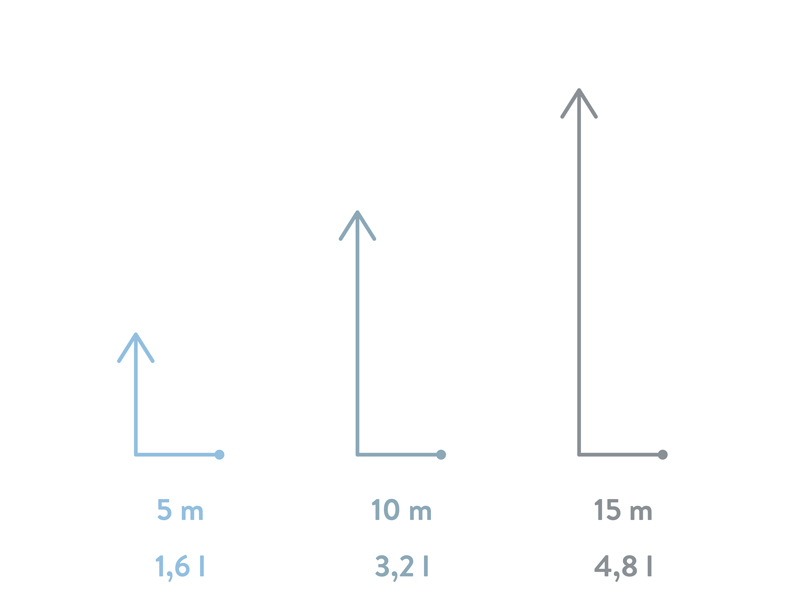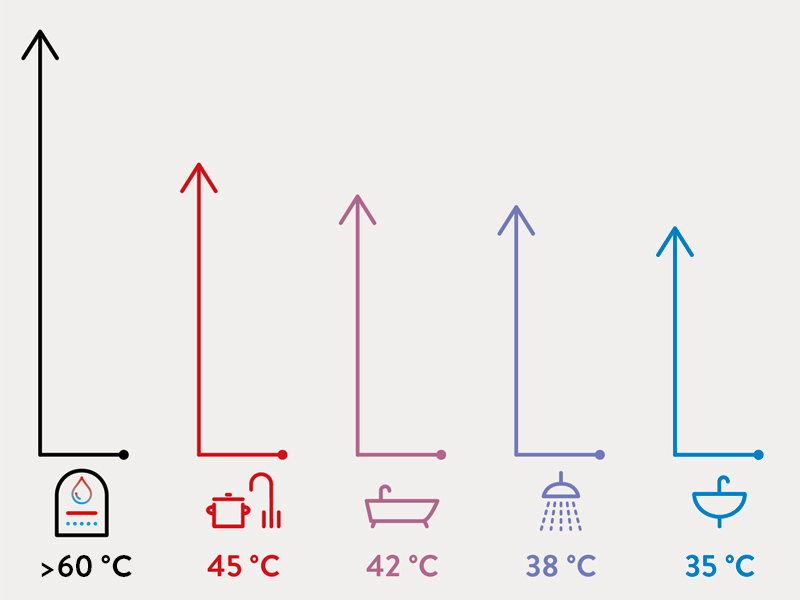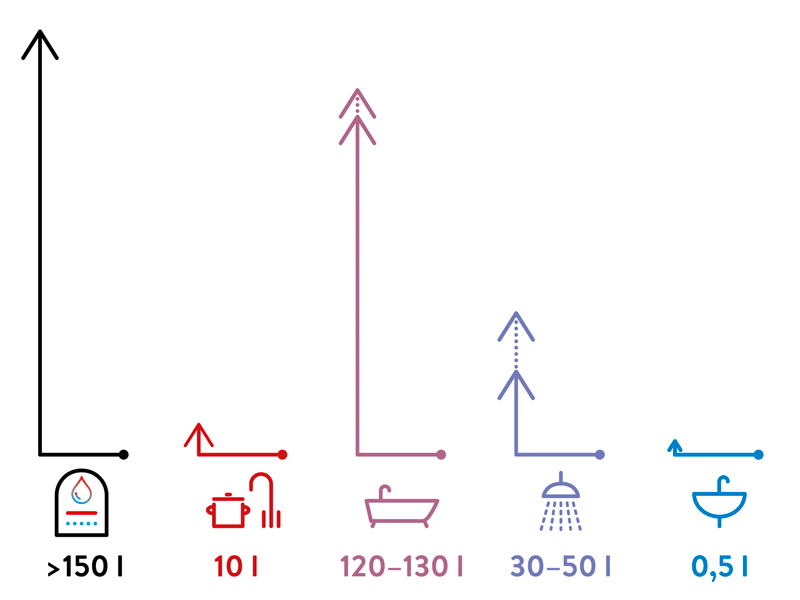Hot water: centralised or decentralised ?
Comparison between
centralised and decentralised hot water solutions
When deciding whether a centralised or decentralised solution should be used for the hot water supply of a building, various factors must be taken into account. Investment costs, installation effort, pipe lengths, comfort, energy and water consumption all play a decisive role. The system should also provide hot water for the individual applications in the right temperatures and in sufficient quantities, ideally even for an unlimited period of time and yet still be economical.
Compare first, then decide!

Short water lines
With a central hot water supply, long water lines and the associated waiting times are inevitable due to the system. With a pipe length of e.g. 15 metres, there are approx. 4.8 litres of cold water in the pipe system, which must first be removed from the pipe. Only then warm water does flow out of the fitting. This can sometimes take 30 seconds!
With a decentralized hot water supply, unnecessarily long water paths are avoided, which cause high water costs or considerable heat losses from hot water circulation. The instantaneous water heater is ideally installed directly at the point of use. Warm water is available without waiting time, saving water and time!

Correct water temperature
In hot water storage tanks, the water is heated to high temperatures above 65 °C due to the required quantities of mixed water. Another reason for these high temperatures is more hygienic: in order to avoid the health-endangering increase of Legionella in drinking water, the hot water must be regularly heated to at least 60 °C when stored. The constant heating of large quantities of water for thermal disinfection costs an unnecessary amount of energy, especially since only relatively low temperatures are actually used.
Warm water is actually used at much lower working temperatures: 35 °C is sufficient for hand washing, and approx. 42 °C is required for bathing when filling the bathtub. The temperature is also around 38 °C for showers and most activities in the kitchen can be carried out at 45 °C.
It is more efficient to heat the water exactly to the temperature required at the respective point of use using electronic electric instantaneous water heaters. The addition of cold water can thus become superfluous. According to the German Drinking Water Ordinance (Trinkwasserverordnung), no legionella test is necessary for instantaneous water heaters. Therefore, decentralized water heating is more hygienic and efficient.

Correct amount of water
In centralised hot water storage systems, water is stored in large quantities (e.g. 150 litres or more) without being used in full.
In fact, much smaller quantities are required for typical hot water situations: as a rule, only 10 litres of water or less are required for flushing in the kitchen. When bathing, 120 to 130 litres of warm water are usual, when showering, approx. 30 to 50 litres are sufficient. To clean hands at the sink, only half a litre of water is often sufficient.
It is therefore more efficient to heat only as much water as is actually used at each tap using electric instantaneous water heaters as required.
